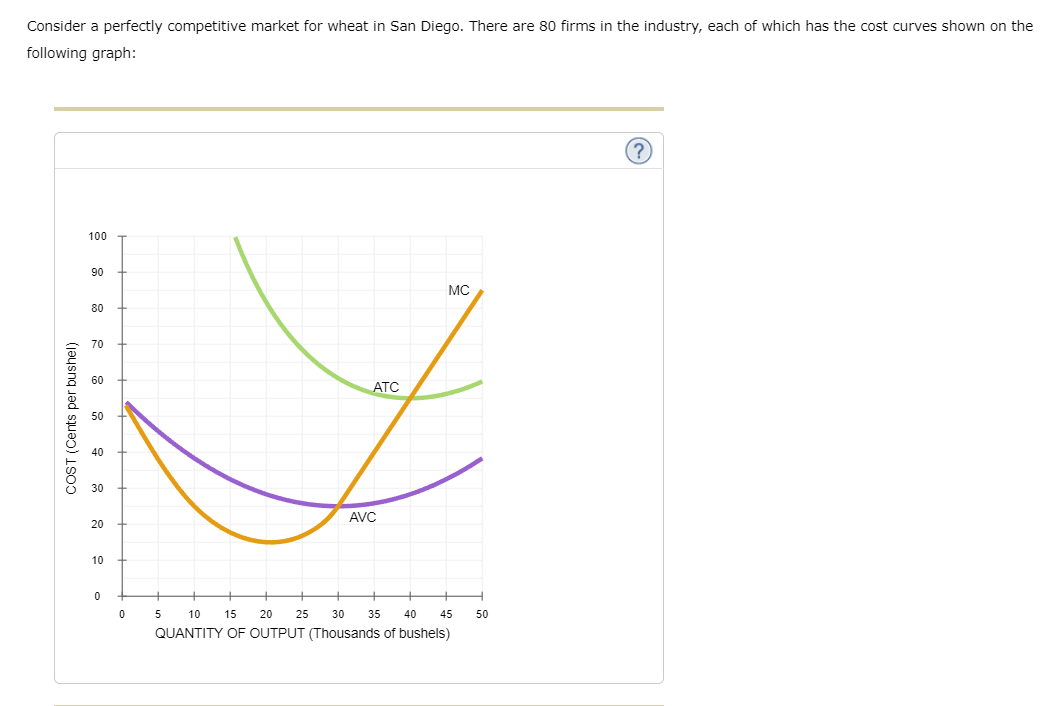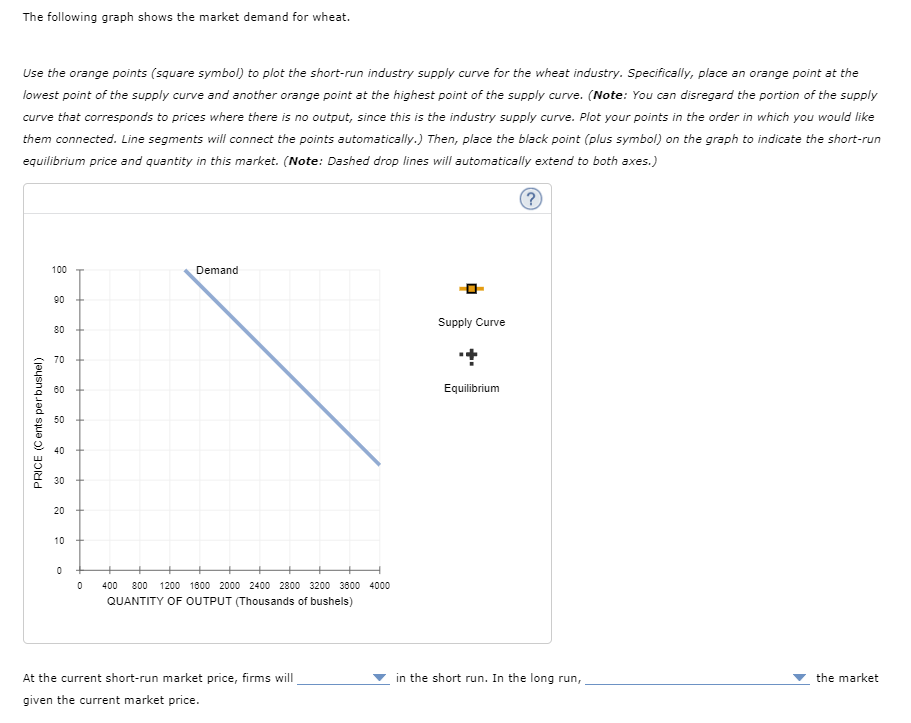Consider a perfectly competitive market for wheat in San Diego. There are 80 firms in the industry, each of which has the cost curves shown on the following graph: 100 90 MC 80 70 60 ATC bushel)
Consider a perfectly competitive market for wheat in San Diego. There are 80 firms in the industry, each of which has the cost curves shown on the following graph: 100 90 MC 80 70 60 ATC bushel)
Chapter7: Perefect Competition
Section: Chapter Questions
Problem 10SQP
Related questions
Question

Transcribed Image Text:Consider a perfectly competitive market for wheat in San Diego. There are 80 firms in the industry, each of which has the cost curves shown on the
following graph:
100
90
MC
80
70
60
ATC
40
30
AVC
20
10
5
10
15
20
25
30
35
40
45
50
QUANTITY OF OUTPUT (Thousands of bushels)
COST (Cents per bushel)

Transcribed Image Text:The following graph shows the market demand for wheat.
Use the orange points (square symbol) to plot the short-run industry supply curve for the wheat industry. Specifically, place an orange point at the
lowest point of the supply curve and another orange point at the highest point of the supply curve. (Note: You can disregard the portion of the supply
curve that corresponds to prices where there is no output, since this is the industry supply curve. Plot your points in the order in which you would like
them connected. Line segments will connect the points automatically.) Then, place the black point (plus symbol) on the graph to indicate the short-run
equilibrium price and quantity in this market. (Note: Dashed drop lines will automatically extend to both axes.)
100
Demand
90
Supply Curve
80
70
60
Equilibrium
50
40
30
20 +
10
400
800
1200 1600 2000 2400 2800 3200 3600 4000
QUANTITY OF OUTPUT (Thousands of bushels)
At the current short-run market price, firms will
in the short run. In the long run,
the market
given the current market price.
PRICE (Cents perbushel)
Expert Solution
This question has been solved!
Explore an expertly crafted, step-by-step solution for a thorough understanding of key concepts.
This is a popular solution!
Trending now
This is a popular solution!
Step by step
Solved in 2 steps with 1 images

Recommended textbooks for you


Economics (MindTap Course List)
Economics
ISBN:
9781337617383
Author:
Roger A. Arnold
Publisher:
Cengage Learning



Economics (MindTap Course List)
Economics
ISBN:
9781337617383
Author:
Roger A. Arnold
Publisher:
Cengage Learning




Managerial Economics: A Problem Solving Approach
Economics
ISBN:
9781337106665
Author:
Luke M. Froeb, Brian T. McCann, Michael R. Ward, Mike Shor
Publisher:
Cengage Learning